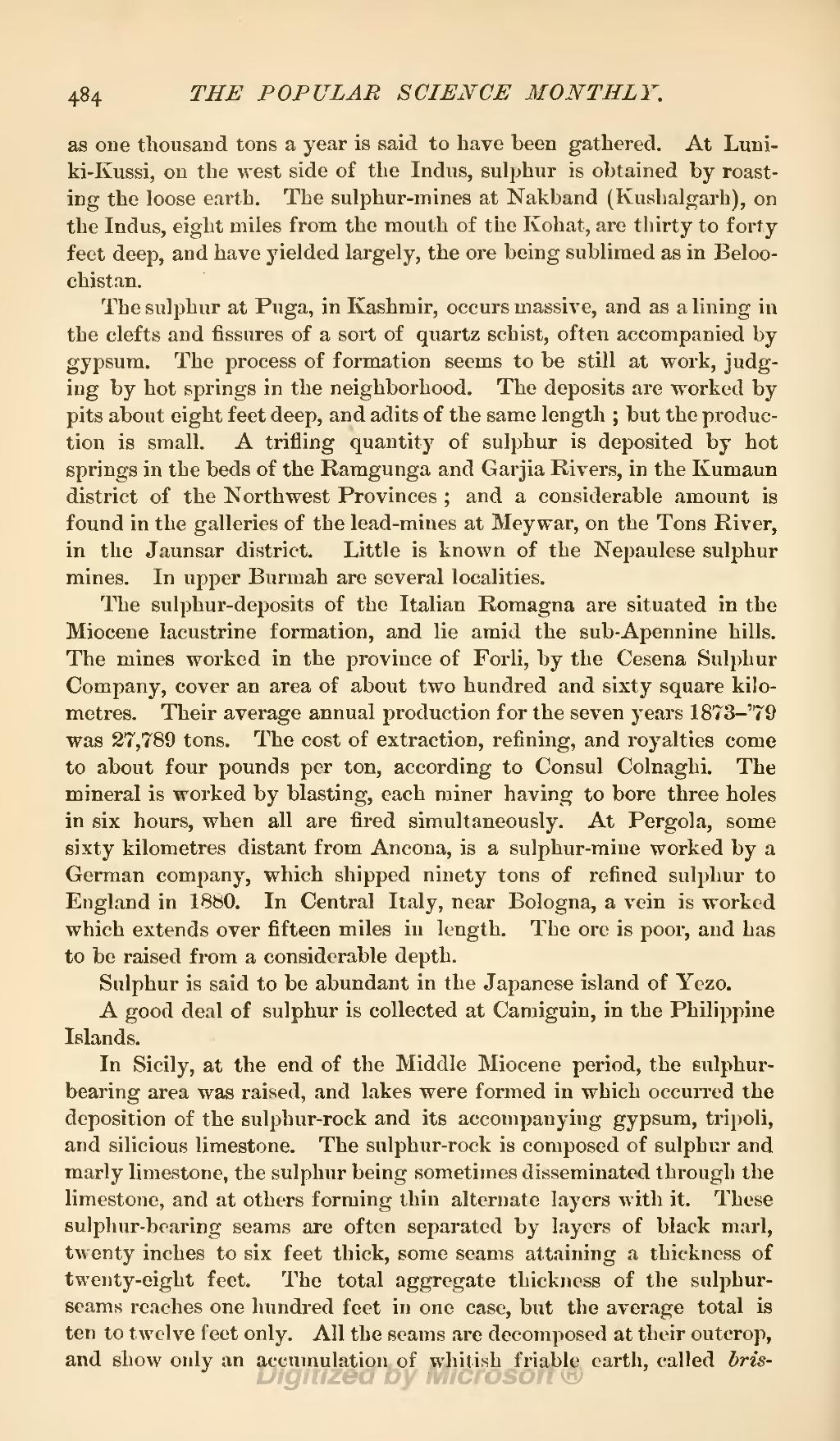as one thousand tons a year is said to have been gathered. At Luniki-Kussi, on the west side of the Indus, sulphur is obtained by roasting the loose earth. The sulphur-mines at Nakband (Kushalgarh), on the Indus, eight miles from the mouth of the Kohat, are thirty to forty feet deep, and have yielded largely, the ore being sublimed as in Beloochistan.
The sulphur at Puga, in Kashmir, occurs massive, and as a lining in the clefts and fissures of a sort of quartz schist, often accompanied by gypsum. The process of formation seems to be still at work, judging by hot springs in the neighborhood. The deposits are worked by pits about eight feet deep, and adits of the same length; but the production is small. A trifling quantity of sulphur is deposited by hot springs in the beds of the Ramgunga and Garjia Rivers, in the Kumaun district of the Northwest Provinces; and a considerable amount is found in the galleries of the lead-mines at Meywar, on the Tons River, in the Jaunsar district. Little is known of the Nepaulese sulphur mines. In upper Burmah are several localities.
The sulphur-deposits of the Italian Romagna are situated in the Miocene lacustrine formation, and lie amid the sub-Apennine hills. The mines worked in the province of Forli, by the Cesena Sulphur Company, cover an area of about two hundred and sixty square kilometres. Their average annual production for the seven years 1873-'79 was 27,789 tons. The cost of extraction, refining, and royalties come to about four pounds per ton, according to Consul Colnaghi. The mineral is worked by blasting, each miner having to bore three holes in six hours, when all are fired simultaneously. At Pergola, some sixty kilometres distant from Ancona, is a sulphur-mine worked by a German company, which shipped ninety tons of refined sulphur to England in 1880. In Central Italy, near Bologna, a vein is worked which extends over fifteen miles in length. The ore is poor, and has to be raised from a considerable depth.
Sulphur is said to be abundant in the Japanese island of Yezo.
A good deal of sulphur is collected at Camiguin, in the Philippine Islands.
In Sicily, at the end of the Middle Miocene period, the sulphur-bearing area was raised, and lakes were formed in which occurred the deposition of the sulphur-rock and its accompanying gypsum, tripoli, and silicious limestone. The sulphur-rock is composed of sulphur and marly limestone, the sulphur being sometimes disseminated through the limestone, and at others forming thin alternate layers with it. These sulphur-bearing seams are often separated by layers of black marl, twenty inches to six feet thick, some seams attaining a thickness of twenty-eight feet. The total aggregate thickness of the sulphur-seams reaches one hundred feet in one case, but the average total is ten to twelve feet only. All the seams arc decomposed at their outcrop, and show only an accumulation of whitish friable earth, called bris-

